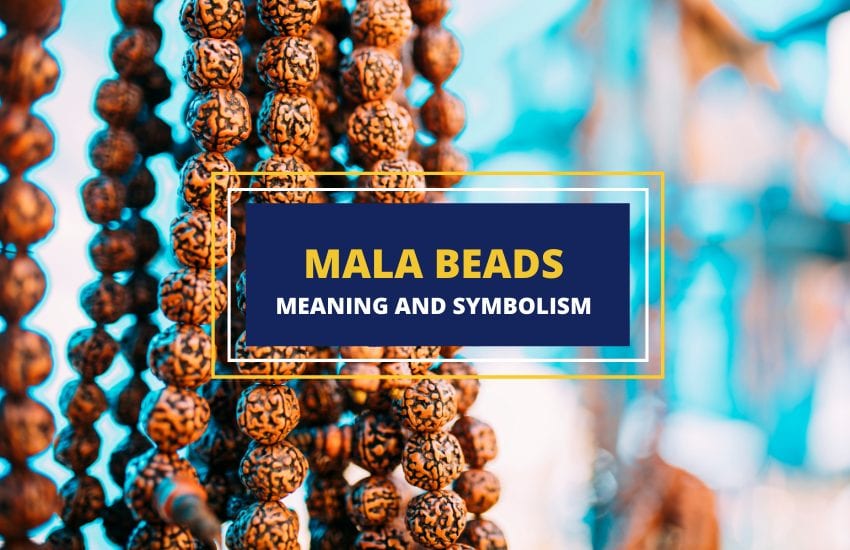
Table of Contents
For centuries, different religious sects have employed prayer beads as a means of meditation and prayer. From Hinduism to Catholicism to Islam, the importance of prayer beads has been demonstrated and thus widely adopted. One such example of prayer beads is the Mala beads.
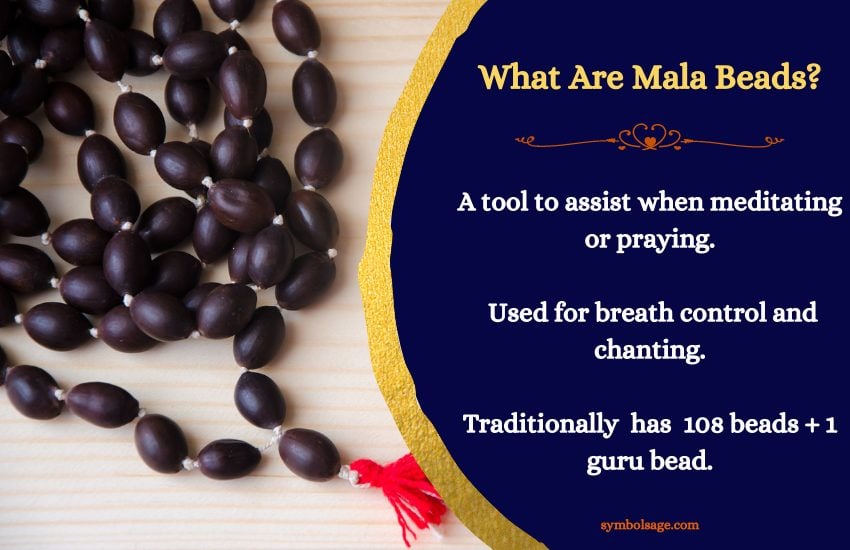
What Are Mala Beads?
Also known as Japa Mala, Mala beads are prayer beads commonly used in Indian religions such as Buddhism, Hinduism, Sikhism, and Jainism.
Although they were traditionally used in these Eastern religions, Mala beads are now used as a mindfulness aid by a lot of people, even without religious affiliations. This set of prayer beads includes 108 beads plus one large guru bead with a tassel at the bottom of the chain.
Importance Of Mala Beads
Similar to most prayer beads, Mala beads are used for prayer and meditation. By moving your fingers over the beads, you can count the number of times you have chanted the prayer mantra.
Additionally, this repetitive process keeps you grounded in prayer or meditation, as it helps focus your mind limiting the possibility of your mind wandering. In essence, Mala beads are designed to help you focus on your meditation.
History Of Mala Beads
Wearing Malas might seem like a recent trend in Western culture, but the practice dates back to 8th century India. The traditional beads were known as “the rudraksha” and were made of species of evergreen trees associated with Shiva, the Hindu god in charge of protecting the sacred texts.
The beginning of the use of mala beads can be associated with Mokugenji Sutra, a text from the 4th Century BCE that recounts this tale:
King Haruri sought the counsel of Siddhārtha Gautama on how to introduce the Buddha teaching to his people. The Buddha then replied,
“Oh king, if you want to eliminate earthly desires and to put an end to their suffering, make a circular string of 108 beads made from the seeds of the Mokugenji tree. Hold it always to yourself. Recite Namu Buddha – Namu Dharma – Namu Sangha. Count one bead with each recitation.”
When loosely translated to English, the chant means, “I dedicate myself to awakening, I dedicate myself to the right way of living, I dedicate myself to the community.
When the use of Mala beads was adopted, the string held 108 beads from the sacred tree, and the above-mentioned words became the mantra.
However, in the modern-day, mala beads are not just for prayer. As mentioned already, the repetitive touching of the beads is used for meditation purposes as well. Additionally, the materials used for the beads have been diversified, and now gemstones, seeds, bone, and a variety of other materials are used to create these beads.
Here are some examples:
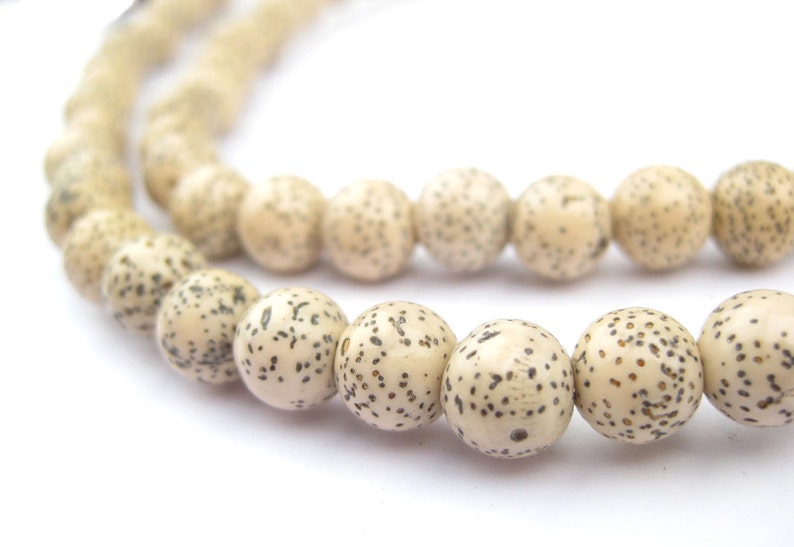
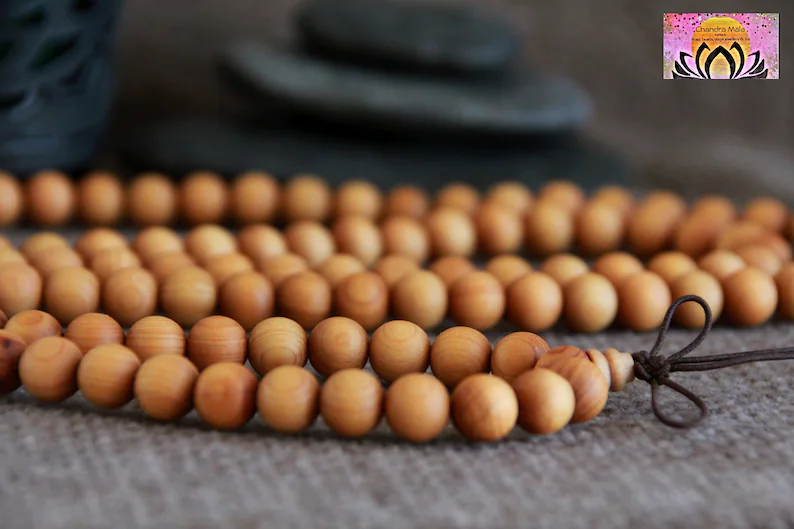
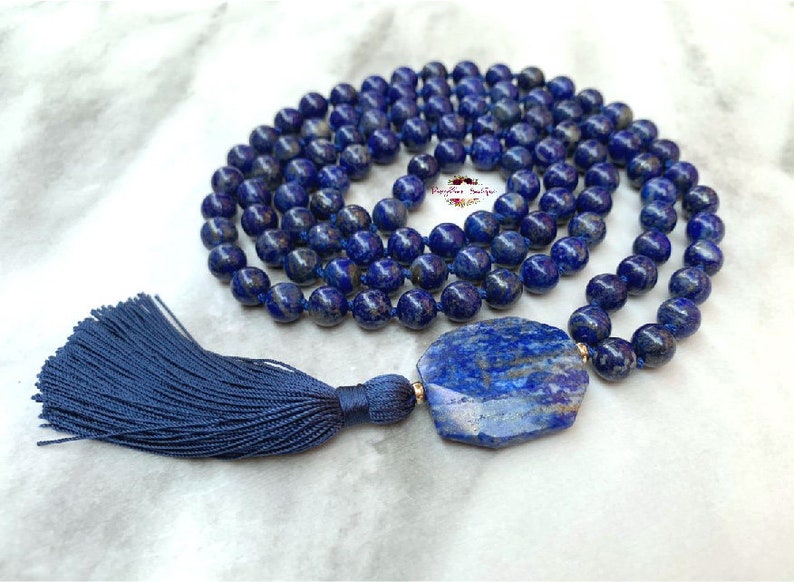
How To Choose Mala Beads
Today, mala beads are made from a range of materials, and the shape and color of the beads also vary. As such, you may find yourself faced with such a variety that making a selection can be hard.
The most important factor to consider in making this choice is the number of beads in the mala: a true mala holds 108 beads plus one guru bead. Sticking to this arrangement will help you feel more connected.
The second factor to consider is how the string of beads feels in your hands. Your choice needs to be something that appeals to you and feels good and easy in your hands. This is because if it lacks the mentioned qualities, then the chances are low that it will help you relax.
Another good way to choose your mala would be based on the material used for the beads. It would be even more ideal if you picked a mala that’s made from something important to you. For example, if you find a mala made from your birthstone or a stone whose meaning carries emotional value for you, then chances are that you will feel more connected and grounded as you use it.
Activating Your Mala
Before using your mala for meditation, it is always important to activate it first. This is because an activated mala helps you connect more with the healing properties of the beads and also because it enhances the beads’ energy to manifest and attune to your energy during meditation.
- To activate your mala, sit in a quiet place holding the beads in your hands, then close your eyes and breath in deeply.
- Next, go back to breathing normally and focus on the rhythm of inhalation and exhalation.
- That done, you can focus on your intention and mantra.
- Holding your mala in the right hand, between the thumb and the middle finger with the index finger pointing outward, use the thumb to touch the beads as you chant your mantra, rotating the mala towards you and breathing with every bead until you have gone round.
- After completing the cycle, enclose the mala beads in your hands and hold them to your heart in a prayer position, and hold them there for a while (this is known as the heart chakra).
- Now bring your hands to your third eye, in what is known as the crown chakra, and thank the universe.
- Lastly, return your hands to the heart chakra, then place them on your lap, take in a single deep breath and open your eyes.
After your mala is activated, you may choose to either wear it as a necklace or bracelet or just use it when meditating.
How To Use Mala Beads
During meditation, the most important uses of mala beads are breath control and mantra chanting.
For breath control, you use the same technique as that used to activate the mala beads. As you move your hand over the beads, breathe in, and out at each bead, concentrating on the rhythmic movement of your heart.
For chanting a mantra, again, just like in the activation process, holding the mala between your thumb (right hand) and the middle finger, move the mala towards yourself. With each bead held, chant your mantra and breath before moving to the next.
Wrapping Up
Mala beads may have a religious background, but they have also proven their importance to nonreligious aspects.
The fact that they can be used for breath control means that they are essential in anger management, relaxation, and finding oneself, among other uses. It is no wonder, therefore, that they are commonplace in yoga.
Therefore, whether you are looking to pray or to attune yourself to the universe, grab yourself some mala, and let it lead you to peace.








